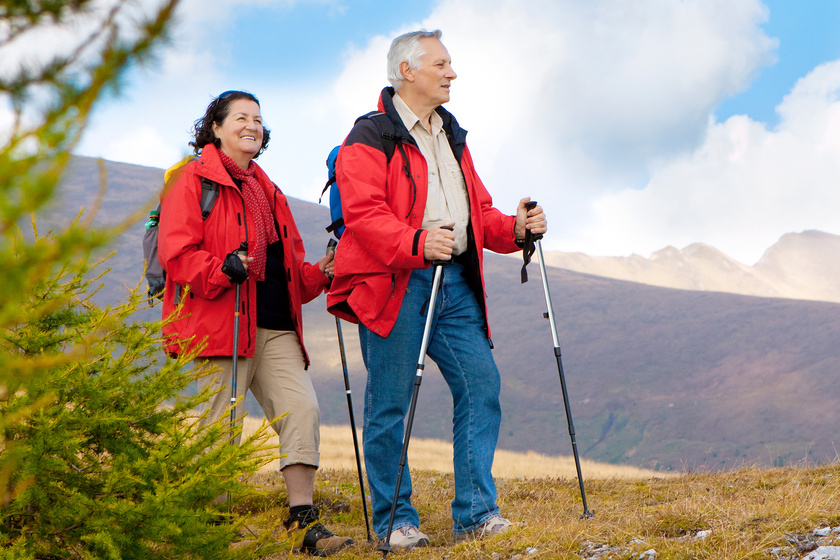When most people think about hiking, they think about a challenging outdoor activity only for the young and fit. However, hiking for seniors can be a great way to get out and enjoy nature with friends or family. It’s a great physical activity for all ages, but it’s especially beneficial for seniors. Hiking is a great way to improve your heart rate, improve your fitness, and boost your mood. Hiking is definitely the perfect activity if you’re looking for a fun day outdoors with your loved ones. But before you hit the trails, though, there are a few things you need to know.
Here are tips to help make your hike safer and more enjoyable for older adults.
Start Out Slowly
Starting out on a hike can seem daunting, especially for seniors. But there’s no need to rush. Take it easy at first and build up your stamina gradually. And remember – always use common sense when hiking in unfamiliar territory. If you feel uncomfortable or in danger, stop and return to your car or the trailhead. Make sure to take plenty of breaks, drink lots of water, and wear sunscreen if you are going to be hiking in the sun.
Dress Appropriately
When dressing for a hike, adults in their golden years should consider the weather and their own physical abilities. In general, they should wear sturdy shoes, pants, and a long-sleeved shirt. A hat and sunscreen are also important. If it is hot, loose clothing that allows air to circulate is best. In cold weather, you should wear layers of clothing that can be removed as they warm up.
Use a Walking Stick or Hiking Poles
Before you get out for a hike, you need to be aware of the many benefits of using a walking stick or hiking poles. These tools can help with balance, provide support on difficult terrain, and even save energy.
It also helps to take some of the pressure off of the knees and hips, which can be sore after extended periods of hiking. Hiking poles are especially beneficial on downhill sections, as they help to keep the body in an upright position and reduce the impact on the knees.
Both walking sticks and hiking poles can also help hikers conserve energy. By reducing the amount of time spent balancing or using muscular strength to stay upright, these tools allow hikers to focus more energy on covering distance.
Stretch before Hitting the Trail
Seniors who enjoy hiking should take a few minutes before hitting the trail to stretch their muscles. This will help prevent injury and make the hike more enjoyable. Hamstring stretches, quadriceps stretches, and calf raises are all good exercises to do before hiking.
Hike at Your Own Pace
Many aging adults enjoy hiking, but some are hesitant to go on a hike because they think they need to be able to keep up with the rest of the group. The great thing about hiking is that you can hike at your own pace. If you’re not feeling up to hiking a strenuous trail, there are plenty of other trails that are less challenging. You can also take breaks as needed. There’s no need to feel rushed on a hike – take your time and enjoy the scenery.
Join a Hiking Club
Clubs offer members the opportunity to explore new places and hike trails they might not have otherwise had the chance to experience. Plus, group hikes can be a lot of fun and provide socialization opportunities.
They typically offer escorted tours to all kinds of destinations, both domestic and international. And since these tours are usually planned by experienced travelers, you can be sure that you’ll see some amazing sights and have an enjoyable trip. Many hiking clubs also offer organized hikes with different difficulty levels, so you can find one that’s perfect for your abilities and interests.
Hiking can be a great way to stay active and healthy. It is a low-impact exercise that is good for your heart, lungs, and muscles. Hiking also has mental health benefits, such as reducing stress and improving moods. So, if you are looking for a new way to stay fit, consider hiking!







